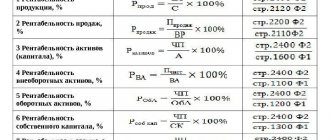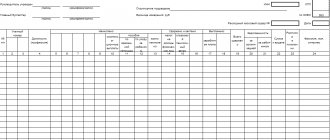What is time wages?
Based on the name of this option for calculating employee pay, the conclusion suggests itself that citizens receive amounts for the time period that they actually worked. The use of this system indicates a combination of several mechanisms for recording the time worked by a citizen. Such payment is applied preferentially in relation to those professions for which the possibility of demonstrating labor results in kind has not been established.
In practical activities, the scope of application of this remuneration option is much wider. Legislative acts indicate that company management has sufficient authority to set its own payment terms and mechanisms for accrual. However, there are no clear regulations establishing the exact boundaries of the use of this payment method. When establishing a time system, company directors need to take into account the requirements enshrined in labor legislation.
Provision is made for determining the operating period used when installing the system in question. This payment method is subject to restrictions related to working hours. The provisions of Article 100 of the Labor Law indicate the procedure for recording working time. The main indicator taken into account when calculating earnings is the period actually worked by the person.
Article 135 of the Labor Code of the Russian Federation establishes standards for determining earnings and allows for the possibility of regulating established mechanisms. Labor legislation does not directly provide for a specific concept of a temporary calculation method.
Salary composition and documents defining it
According to Art. 129 of the Labor Code of the Russian Federation, salary can be a value made up of 3 parts:
- the actual salary or payment for the work directly performed;
- compensation payments that take into account the special conditions in which work is carried out;
- additional incentive payments, the purpose of which is additional encouragement for work results and, accordingly, increasing interest in these results.
The first 2 parts are mandatory for establishment and are largely regulated by the Labor Code of the Russian Federation:
- types of remuneration have been determined (Article 129) and data sources for tariffication of work according to their complexity (Articles 143, 144);
- the minimum wage is limited (Articles 130, 133 and 133.1) and the share of payment in kind (Article 131);
- for state institutions, salary indexation is mandatory (Article 134) and the maximum amount of payments to its managers is limited by dependence on the average salary for the institution (Article 145);
- the mandatory requirement for increased wages, carried out under special conditions, is stipulated (Articles 146–149, 152–154).
At the same time, the introduction of an incentive part of the salary is not mandatory. Therefore, each employer independently resolves issues (Articles 129, 135 of the Labor Code of the Russian Federation):
- about the presence of this part as part of the salary;
- on the rules for calculating incentive payments.
The employer approves the adopted wage structure and the developed incentive rules in internal regulatory documents. Such documents may be:
- regulations on the remuneration system, which in a separate section includes incentive rules;
- a collective agreement describing both the remuneration system and incentive rules;
- separate documents (provisions) devoted to: one - the remuneration system,
- the other is the incentive system used;
The content of internal regulations independently developed by the employer on issues of labor law is mandatory:
- consistent with representatives of the labor collective (Article 135 of the Labor Code of the Russian Federation);
- is brought to the attention of each employee against signature as an integral part of the terms of the employment agreement (Article 57 of the Labor Code of the Russian Federation).
ConsultantPlus experts explained what types, forms and systems of remuneration there are, as well as the procedure for calculating wages for various forms of remuneration. If you do not have access to the K+ system, get a trial online access for free.
For more information about the documents establishing the rules for bonuses, read the article “The procedure for paying bonuses under the Labor Code of the Russian Federation.”
Types of time wage systems
There are several varieties of this payment method.
Table 1. Types of time wages
| Variety | Description |
| Simple | This option is the easiest among existing ones. It reflects the ratio of the period actually worked by an individual employee relative to the level of salary received. The amount is calculated on the basis of the established tariff rate, which correlates with the period while the person performed his duties at work. This technique is quite simple to use to solve the nuances of accounting. There is no need to involve other financial department employees. |
| Premium | The features of this option include the fact that factors are established that aim to stimulate the face. They are aimed at increasing the overall salary and depend on the bonus procedure established in the company. For example, it is permissible to establish dependence on compliance with current standards or their exceeding. There are no negative aspects of this system. |
| Piecework | This option can also be referred to as a mixed payment type. It combines the features of a piecework and time-based system. For example, this option is applicable in production when there is forced downtime. |
| Salary | This system implies that not hourly standards are established, but a specific amount of payment, subject to working a certain time period. When a person complies with all conditions, the payment is made in full. Otherwise, earnings are calculated as a percentage of the salary. |
The time-based system provides different options for recording labor time. Currently, many enterprises are equipped with modern equipment for recording working hours. This indicates the possibility of reflecting the period worked by a person more clearly, including in minutes and seconds.
Advantages and disadvantages
Like any other method of remuneration for work done, the time-based bonus system has its strengths and weaknesses, which are preferably reflected in the table.
| Advantages | Flaws |
| Thanks to the relationship between monetary remuneration and specific indicator values, employees are encouraged to properly perform their duties and high quality work. | It is necessary to very clearly define the indicators that give the right to a bonus part of the salary. If they are underestimated, employees will get used to the bonus received without effort; if they are overestimated, discontent, unrest (including mass) and disruption of the labor process are possible. |
| Compared to many other payment methods, the system is very simple in calculations, which allows both the financial service and the employees themselves to easily calculate their future salaries. | If both categories of indicators (quantitative and qualitative) play a role, then it may not be possible to balance them in relation to each other. |
| Thanks to the material interest of all participants in the labor process, labor productivity is optimized, the misuse of various labor resources is reduced or completely eliminated. | In conditions of instability, declining demand for the company's products or a decline in purchasing power, ordinary employees may lose bonuses without their fault (for example, the planned sales volume was not achieved). |
| Work equipment (including expensive and bulky equipment) is maintained by responsible persons in order and serviceability without additional outside control. | In cases where the system is applied to a wide range of people, their contribution may be calculated biased. |
| The system allows you to balance the staff of an enterprise - if used skillfully, it will become clear which positions can be painlessly reduced, and which staffing units, on the contrary, require expansion. | If the formulas for calculating bonuses are vague, this fact can be used by individual officials for personal interests. |
The use of a time-based bonus system is a voluntary decision of the management of any organization.
The application does not exclude the possibility of other types of financial incentives (optional) by the employer for individual employees or departments (financial assistance, social benefits, end-of-year bonuses).
Registration of labor relations
When a person is hired, the company management needs to draw up an employment contract. Working conditions are to be reflected in this act. The document must be prepared in two copies. The salary amount and the tariff applied when calculating earnings are subject to mandatory reflection.
Salary calculation based on the tariff rate
The time-based bonus wage system is a subtype of the time-based form of payroll. As mentioned above, the amount paid to employees depends on:
- on the size of the salary or tariff rate;
- from time worked.
The concept of salary and tariff rate is given in Article 129 of the Labor Code of the Russian Federation.
Salary is a fixed amount of remuneration for performing the job duties assigned to a person during the month.
Tariff rate is a fixed remuneration for fulfilling a labor standard for a certain unit of time. The tariff rate can be set per working day or hour.
If the employee has a salary, then the amount of earnings for the month is calculated as follows:
If, under an employment contract, a tariff rate is paid (per day or hour), then the calculation is made as follows:
Or like this:
Who uses time payment
The main feature of the system under consideration is that the time worked by the person is actually paid for. This factor should be put at the forefront when using this payment option. The optimal scope of application of time-based payment is the calculation of earnings for narrow specialists and persons holding managerial positions.
To optimize the process of citizens returning to their workplace, it is necessary to make adjustments to the organization of work activities:
- conducting control activities;
- indicate the reasons why the company’s downtime occurred, if any;
- using a system to classify workers based on length of service and established tariffs;
- organization of discipline in work activity.
If the company's management takes into account the above rules, then the company's personnel will strive to perform their duties in accordance with the job description.
Most often, this technique is used to calculate payments to certain categories of persons. These are sellers or law enforcement officers, doctors and lawyers, employees of financial departments of companies.
Advantages and disadvantages of a time-based wage system
This payment method has negative and positive sides. The advantages include:
- stability in payments (citizens are confident that they will receive funds in full even if the equipment breaks down, etc.);
- minimum level of staff turnover (according to statistics, workers are much less likely to quit when this payment system is established);
- efficiency if there are difficulties in the process of labor standardization;
- no negative type motivation;
- It’s quite easy to maintain personnel policies and take into account the time worked by employees.
The negative aspects of the system under consideration are:
- establishing a minimum level of employee motivation;
- increased responsibility of the team, while low labor fairness is established;
- if emergency situations arise, the use of this system will have low efficiency;
- high risk.
Taking into account the above points, the company’s management needs to understand that the time-based system must be used in conjunction with other payment methods.
Piecework and time-based forms of remuneration
There are a couple of basic methods by which employees are paid. This is time-based and piecework. They have certain differences between themselves. The main ones include the fact that payment is made for:
- production of a specific number of items;
- completed transactions;
- achieving a certain volume in production.
The establishment of a piece-rate payment format indicates that the citizen has a greater level of interest in producing more goods. This indicator directly affects the amount of remuneration for labor. Other differences include:
- Scope of use . Piecework is applied only where the quantity of goods produced or work performed is subject to accounting. Time-based is needed if it is not possible to evaluate the result of labor in kind.
- Does the level of productivity affect the amount of payment ? This indicator affects only when the company establishes a piecework form of payment calculation. The number of items a person makes will affect the payment.
- Benefit from the payment method used . Piecework carries great benefits for company management. A citizen will receive an increased salary if he exceeds the plan. The time-based payment option is beneficial for employees.
- Stability of payments for work activities . Regardless of the method used in the company, payment of remuneration to employees is guaranteed. For example, when a company operates a piecework system, this amount depends only on the quantity of goods produced. If a time-based system is used, then a dependence is established on the number of hours worked.
- Motivation . With piecework there is this indicator. This is due to the fact that the citizen is interested in producing as much goods as possible so that he is paid an increased salary at the end of the month. If we talk about the time-based option, then there is no motivation if the employment agreement does not stipulate the possibility of paying bonuses.
- Quality of work performance . Both systems provide that this indicator leaves much to be desired. The reason is that during piecework, a person tries to create as many items as possible, and accordingly, the quality suffers from this. With a time-based system, payment has no connection with the level of quality of the work performed.
Calculation procedure and example
The procedure for calculating wages when using PPSOT in an organization is as follows:
- the employee’s monthly salary is determined without taking into account compensation and incentive payments;
- it is determined whether in the current month there are grounds for calculating a bonus in accordance with the local act;
- the bonus is calculated and summed with the salary or tariff rate, multiplied by the number of days actually worked in the month.
Let's give a simple example to understand the situation.
Let the official salary of M.K. Igorev, working as a sales manager in a household appliances and electronics store, be 15,000 rubles. Payment of salary in full is carried out if the employee has fully worked the normal working hours for the month.
In March 2020, according to the production calendar, the number of working days is 20, of which Igorev worked only 17.
The bonus regulations in force at Igorev’s employer stipulate that when the company’s total monthly sales plan is fulfilled in an amount of more than 1 million rubles, the manager receives bonuses in the amount of 25% of wages.
First, we determine Igorev’s salary for the billing period, dividing the salary by the number of working days in March and multiplying by the number actually worked:
15000 / 20 * 17 = 12750 rubles
The bonus regulations provide for the calculation of bonuses depending on salary, and not on salary, so 25% is multiplied by 12,750. As a result, the bonus will be 3,188 rubles.
We add up the salary and bonus - we get 15,938 rubles - this is exactly how much Igorev will receive in March 2020.
If the enterprise does not use a salary, but an hourly (or daily) rate, for calculation it is necessary to multiply the hourly (daily) rate by the corresponding number of hours worked in the month according to the time sheet.











